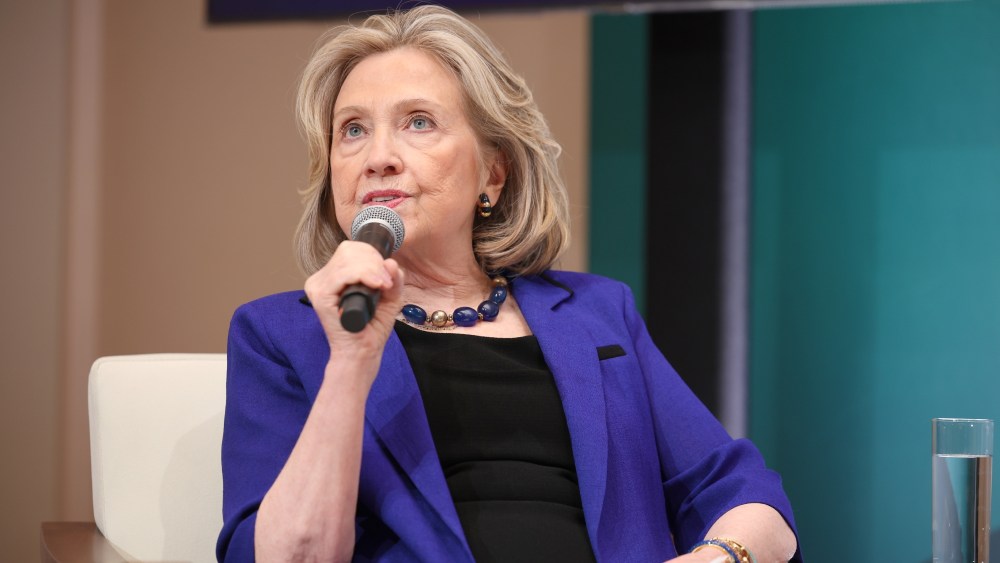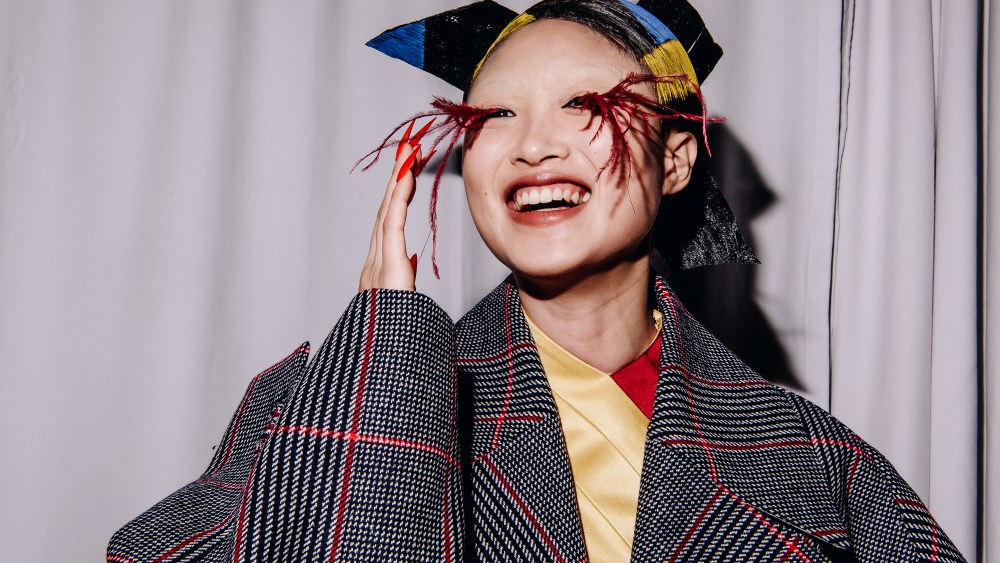“This honor is because of him. It’s not because of me,” Giancarlo Giammetti insisted after he was presented with the John B. Fairchild Honor for Lifetime Achievement, which he shared with designer Valentino Garavani for building a global fashion empire. “I’ve been just a little part of his journey. I’ve been only capable. And I think the most important thing I did was to leave him free to do what he wanted to do.”
During an on-stage conversation with WWD’s Milan bureau chief Luisa Zargani at the ninth annual WWD Honors Gala, the Italian businessman did not mince words about the inimitable talent of the Roman couturier — or any other subject for that matter, explaining why he could not be bothered to stick around New York and be included in the “The Devil Wears Prada 2,” which is currently filming. It again stars his friend Anne Hathaway, who attended the gala and presented the WWD honor to Giammetti.
“I was not able to do it because I preferred to be in London and to go to Frieze,” he said matter-of-factly, referring to the popular contemporary art fair.
You May Also Like
Giammetti articulated beautifully the crux of Garavani’s talent.
“Valentino was always inspired by what we called beauty, which is not the superficial beauty, it’s beauty as a way of moving, a way of acting, the beauty that creates beauty, beauty of generosity, beauty of philanthropy, a beauty in which a woman is not transformed, but made more secure, feeling stronger,” he said.
“Valentino never disguised women in something else. He was studying the person, and he was trying just to make her better, to enhance what she has and not show something ridiculous on women just to say, ‘Oh, I did something so cool, so new.’ No. Women are beautiful, and women should be treated in a beautiful way.”
Yet the beginning of their fashion adventure started out modestly in the 1960s.
“I was just 22 years old when I met Valentino. I didn’t know about fashion, didn’t know about finance. I didn’t know anything about this world,” he related. “At the time, we were very poor, we didn’t have money to hire a lot of people, so we had to do everything. At the beginning, I remember I was even measuring the fabric before sending it to the factories. So I think it was the enthusiasm, courage and the love between us, that made this possible.
“And little by little, we became more important and more capable of hiring and surrounding ourselves with people really that we needed.”
The executive made it clear he shielded the designer from anything that might disturb his creativity, including critiques of his collections.
“I remember I had in my office all the newspapers, all the magazines, and they all talked about him. But he never read one line,” Giammetti said. “He would ask me, ‘So, how was the [International Herald Tribune?]… I would just say, ‘Oh, it’s stupid.’ When you are so strong, when you believe in yourself, believe in what you do, you don’t lose your identity.”
Not that there weren’t fiery moments between the two men, some of them documented in Matt Tyrnauer’s 2008 film, “Valentino: The Last Emperor.” Giammetti admitted that when they first saw the film, they were so upset the considered hiring a lawyer and suing. They eventually calmed down.
“Anyone who watched the movie knows how difficult it has been sometimes for me to be able to say anything to Valentino or to suggest anything, because he would become furious.
“Still, I wanted to be sure that he had the peace and the freedom to work in the way he wanted,” he continued. “I just tried to follow what he was doing with my side of the business — advertising, the shows, movies — and also running 1,000 people every day and teach them to respect the identity of Valentino.”
Giammetti allowed that most designers today don’t enjoy as much freedom, as huge corporations and large luxury groups “have something to say. There is not the same freedom as when you are on your own, and especially if you are successful.”
He also cited worries about the great game of musical chairs playing out across Europe’s biggest fashion houses. “When we have a new designer, he should know that he has to protect the identity of the brand. And most of the designers want to protect their own identity, and they want to bring their own identity to the company where they are hired. So this is what bothers me in fashion.”
Both men were well acquainted with John B. Fairchild, a fearsome and powerful editor who could make or break a designer.
“He was not an easy guy, but he was a great journalist,” Giammetti said. “He was always thinking about the reader, making sure they would not be bored…
“He was challenging. He was not always nice. He was very rarely nice. He was tough and determined, without any pity. We had a lot of moments when we disagreed with each other. I was famous at that time to ban from our show the journalists I didn’t like, but we didn’t ban him. I wanted him there, because it was a challenge, and there were a lot of things to learn from him.”
Giammetti spoke about how the Roman house helped pioneer modern fashion advertising, shifting the focus from the great fabric houses to the designer.
“The name of the designer was in the corner. The big name was on the textiles. There was a lot of competition back then between the big houses in Italy, mostly between Valentino, Armani and Versace. So that’s why the magazine became like this,” he said, showing a big space between his thumb and index finger. “Vogue Italia was heavy like a telephone book. It was incredible because, of course, each one of us tried to have more pages. The winner was always Armani every time, but it was fun.”
Over the years, a host of famous women fanned Valentino’s fame, including Jackie Kennedy and Elizabeth Taylor.
“Those people became friends of ours. They were not just getting the clothes and so we shared so many great moments,” he said. “Elizabeth Taylor was an amazing woman that everybody knows. They know her probably more for the movies, for weddings, for the marriages, how many husbands, how many houses, how much jewelry.
“But this was a woman who protected millions of people from AIDS. She would sell her jewels to open some hospital in Africa. We were part of this,” he said, referring to the L.I.F.E. charity they established in 1990 to support children affected by AIDS. “She brought us to visit the place where the AIDS patient were, and because they were rejected, she would sit with them on the floor to talk to them. So that’s the Elizabeth I love and respect.”
Giammetti said the vitality and beauty of these women inspired him and Garavani immensely.
“We were impressed by them, we learned a lot from those women, because you cannot go to the house of Madame [Marina] Agnelli, who was the most incredible hostess, and not learn how to handle a house, how to decorate the house, what was good for you and for your life.”
Today, Garavani and Giammetti are focused on their namesake foundation, located at 23 Piazza Mignanelli and called PM23. The venue serves as a hub for the foundation’s cultural and philanthropic activities and events and was inaugurated last May with the exhibition “Horizons | Red,” displaying 50 red dresses by Valentino with a range of 30 art masterpieces.
“The next show will feature the work of a very beautiful Portuguese artist called Joana Vasconcelos, and this will open in January,” he said.
Asked to name a mistake that he would change if he could, Giammetti balked: “Which successful story is without mistakes? How do you become bigger if you don’t learn how to correct your mistakes? I have too many to remember.”
Finally, asked about his definition of style, Giammetti did not skip a beat and replied: “It’s what you learn, how you become stronger with your taste. It’s not about what you wear. It’s not about the label on your back. Style is something that you have to develop yourself. And there are people who are born with this capacity to become stylish, and there are people who have to be helped do it, but that’s why we are here.”


